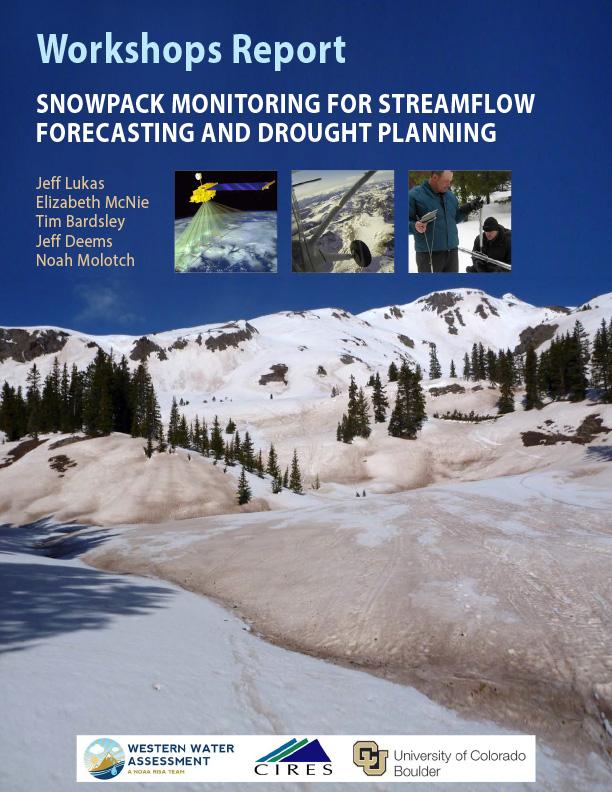Snowpack Monitoring for Streamflow Forecasting and Drought Planning
For water providers and others in the Rocky Mountain West who depend on the pulse of runoff from the melting snowpack from April through July, snowpack monitoring is drought monitoring. A well below average snowpack as measured by snow-water equivalent (SWE) is a harbinger of not only low water supply but also other drought impacts, such as increased fire risk and below-normal summer soil moisture.
However, the snowpack is complex, varying tremendously over short distances and from year-to-year, and changing rapidly during the season, especially in the spring. The in-situ snow-monitoring network—from snow courses and SNOTEL sites—provides a robust snapshot of conditions in most years and most basins, but may not capture large deviations from more typical patterns of snow accumulation and melt.
In summer and early fall 2015, the Western Water Assessment (WWA) organized and delivered three all-day workshops intended to improve the usability of snowpack monitoring information in the Rocky Mountain West, with a particular view to enhancing that monitoring with new technologies. The workshops were in West Jordan, UT (August 11), Lander, WY (August 27), and Broomfield, CO (September 9). This effort was supported by “Coping with Drought” funding from NIDIS. The workshops brought together a total of 180 participants, mainly representing a core user community of local, state, and federal water managers, along with other stakeholders, researchers, and operational information providers.
The main workshop objectives were to:
- Help improve the usability and use of snowpack monitoring information for runoff forecasting, drought early warning and planning, and other applications
- Provide background information on snow hydrology and snow measurement
- Describe operational snow-monitoring products and how they are used in runoff forecasts
- Provide guidance for accessing and interpreting operational data
- Introduce and demonstrate new snow-monitoring products using satellite and airborne sensors being developed by WWA researchers and others; and
- Facilitate interaction and further conversation between stakeholders, researchers, and operational data providers in NRCS and NOAA.
Contents of the report include workshop participants, presenters and main content, discussions and Q&A, post-workshop evaluations, synthesis findings, and recommendations for NIDIS.


